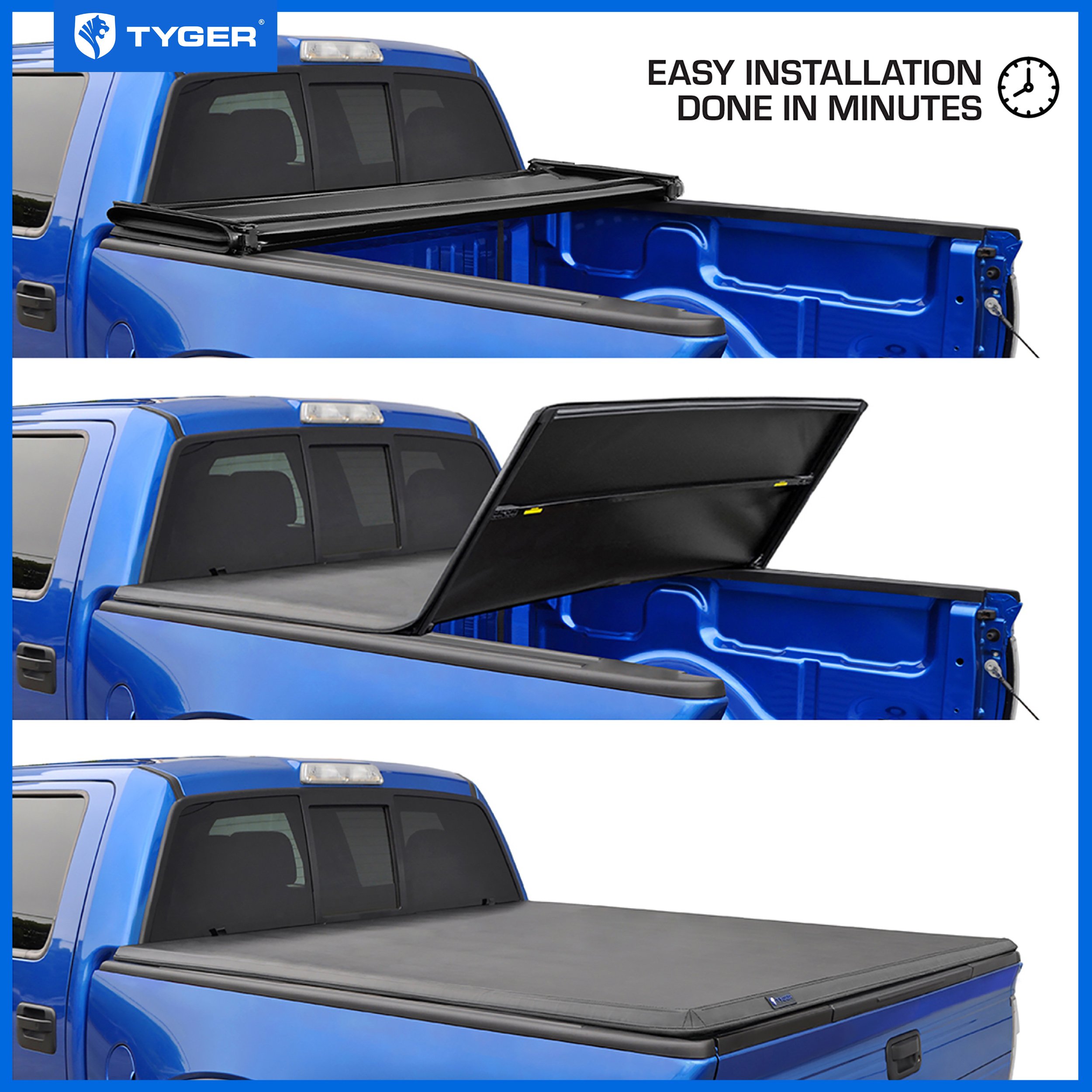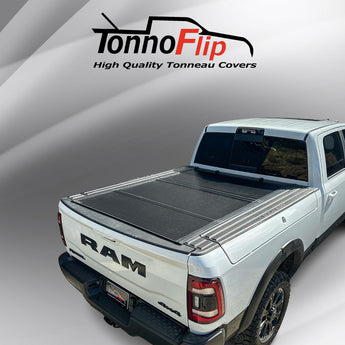Yes, tonneau covers are generally easy to install. Most come with user-friendly instructions and require basic tools.
Let’s dive into the details. Tonneau covers offer great protection for your truck bed and cargo. They enhance the look of your vehicle while keeping your items safe from the elements. But, how simple are they to install? This is a common concern for many truck owners.
Understanding the installation process can help you decide if a tonneau cover is right for you. In this blog, we will explore the ease of installation, the tools you might need, and what you can expect during the process. Whether you’re a seasoned DIYer or a newbie, this guide is for you.
Introduction To Tonneau Covers
Tonneau covers protect the bed of your truck. They keep your cargo safe from the weather. They also help keep your items out of sight from thieves. A tonneau cover can improve your truck’s look too. It makes the truck look sleek and clean.
There are many types of tonneau covers. Each type has its own benefits. Here are some common types:
- Soft Roll-Up: Easy to install and remove.
- Hard Roll-Up: Offers more security.
- Folding: Can be soft or hard. Easy to use.
- Retractable: Slides open and closed. Very convenient.
- Hinged: Acts like a trunk lid. Gives quick access.
Preparation Before Installation
You need a few tools to install a tonneau cover. You will need a wrench, screwdriver, and measuring tape. Sometimes, a drill is also needed. Always have your toolkit nearby. This makes the job easier and faster. Make sure all tools are in good condition. Check for any broken parts before starting.
Not all tonneau covers fit every truck. Check your truck model first. Measure the bed length and width. This helps in finding the perfect fit. Read reviews from other users. This gives you an idea of the cover’s quality. Look for weather resistance and durability features. These ensure your cover lasts long. Choose a cover that matches your needs.
Step-by-step Installation Process
Start by unboxing the tonneau cover. Carefully remove all parts from the box. Check each part for damage. Make sure you have all the necessary pieces. Follow the instructions included. Lay out all parts for easy access.
Place the cover on the truck bed. Align it with the edges. Adjust until it fits evenly. Use the clamps provided to secure it. Tighten the clamps firmly but not too tight. Ensure the cover is flat and smooth.

Credit: www.tygerauto.com
Mounting The Tonneau Cover
Align the rails with the truck bed. Make sure they fit snugly. This is crucial for a proper seal. Use a measuring tape to check alignment. Adjust if necessary. Clean the area before securing the rails. Dust and dirt can affect the fit.
Attach the clamps to hold the rails. Tighten them with a wrench. Ensure they are secure. Check each clamp twice. Loose clamps can cause issues. Make sure all clamps are tight and even. This will ensure a firm hold.
Adjusting And Tightening
Ensuring proper fit is key for a tonneau cover. It needs to be snug. A loose cover will flap in the wind. This can cause damage. Start by placing the cover on the truck bed. Make sure it is aligned. Check the edges. They should be even. If not, adjust them. The fit must be perfect. This will prevent leaks. It also gives a sleek look. Don’t rush this step. Take your time to get it right.
Next, focus on tightening mechanisms. There are different types. Clamps are common. Some covers use bolts. Others have latches. Each type has its method. Read the instructions. Follow them carefully. Tighten all the parts. Make sure they are secure. Check for any gaps. If you find any, adjust again. A well-tightened cover stays in place. It protects your cargo. It also improves fuel efficiency. Proper tightening is crucial.

Credit: tonnoflip.com
Final Checks
Check the seals around your tonneau cover. Ensure they are tight. Seals must keep water and dust out. If the seals are loose, adjust them. Tighten any screws that are loose. Look for any gaps in the cover. Close all gaps to keep your cargo dry. Test the cover in the rain if possible. Make sure no water gets inside.
Ensure the locks are working well. Try to lock and unlock them a few times. If they are stiff, use lubricant. Check that the cover stays shut when locked. If it pops open, adjust the locks. Make sure the keys fit well. Test all lock points. Everything should be secure. Your cargo needs to be safe.
Common Installation Issues
Misalignment is a common issue. Tonneau covers sometimes do not fit properly. This can be due to incorrect measurements. Always double-check your truck’s bed size. Another cause can be incorrect mounting. Ensure all parts are aligned before tightening. Misaligned covers may let water in. They also look bad. Follow the instructions carefully.
Loose fittings can cause problems. Ensure all bolts and clamps are tight. Loose covers might flap in the wind. This can damage the cover. It can also make noise. Double-check all fittings after installation. Tighten any loose parts. Regularly inspect your cover. Maintain its fit for safety.
Maintenance Tips
Keep your tonneau cover clean to make it last longer. Use mild soap and water. Rinse it well to remove all soap. Dry it with a soft cloth to avoid scratches. Clean it every month to prevent dirt buildup. A clean cover looks better and works better.
Inspect the cover regularly for any damage. Look for cracks or tears in the material. Check the seams and edges for fraying. Make sure the latches and hinges are not broken. Fix any issues quickly to avoid bigger problems. Regular checks help keep the cover in top shape.

Credit: www.youtube.com
Conclusion
Tonneau covers are generally easy to install. Most models come with clear instructions. Basic tools are usually enough for the job. Many covers require no drilling. This makes the process quicker and cleaner. Even first-timers can handle it. You can save time and money by doing it yourself.
Just follow the steps carefully. Enjoy the benefits of a secure and stylish truck bed. Happy installing!
